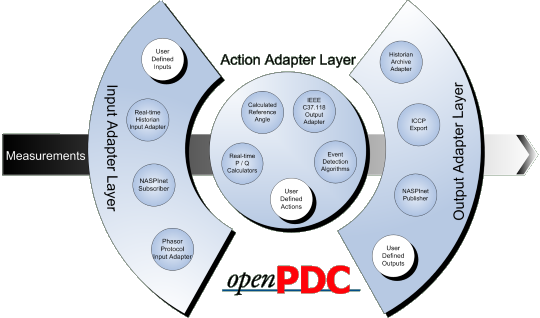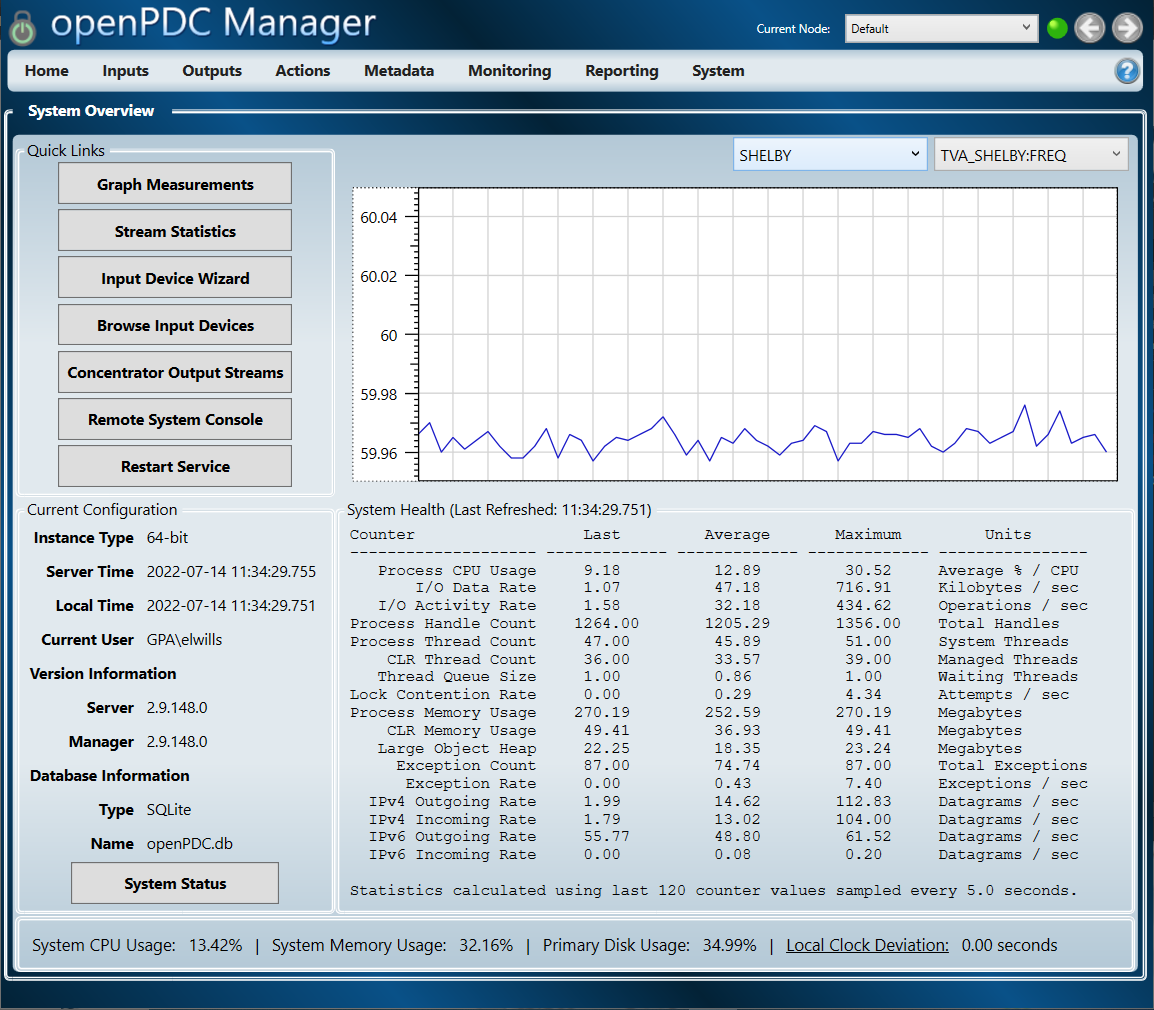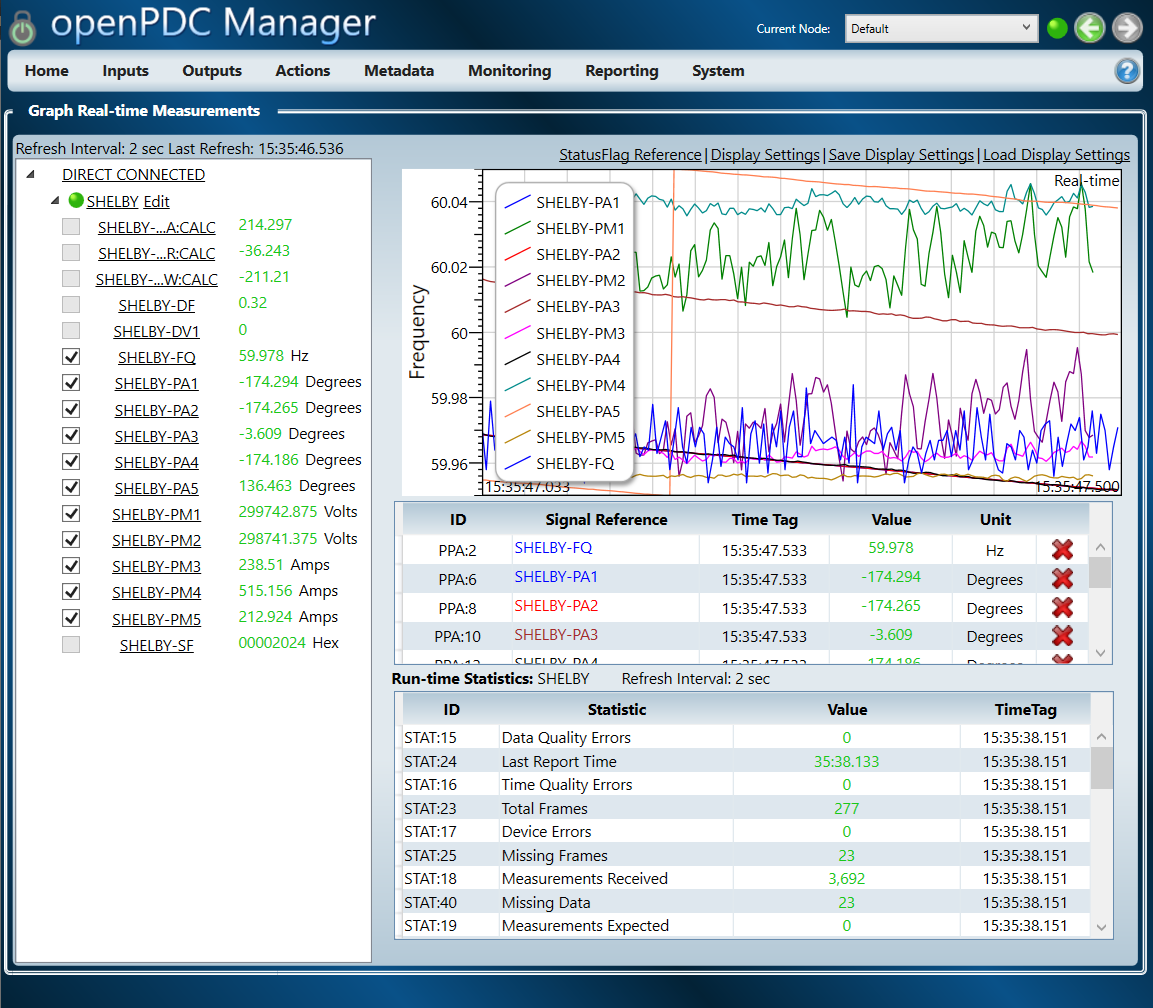openPDC
A high-performance phasor data concentrator.

- Guided setup and configuration
- Input protocol adapters for a wide array of PMUs
- Included historian and output adapters for multiple other historians
- Install anywhere in the phasor data infrastructure - even fanless computers in substation environments
- Performance statistics logged every 10 seconds
- Distributed mult-node architecture support for high availability and throughput
- Community Support
- Dedicated Support
- Dedicated 24x7 Support Available

- Guided setup and configuration
- Input protocol adapters for a wide array of PMUs
- Included historian and output adapters for multiple other historians
- Install anywhere in the phasor data infrastructure - even fanless computers in substation environments
- Performance statistics logged every 10 seconds
- Distributed mult-node architecture support for high availability and throughput
- Community Support
- Dedicated 8x5 Business Day Support
- Dedicated 24x7 Support Available

Overview
The openPDC is a high-performance data concentrator platform for managing streaming synchrophasor and other time-series data in real-time.
The openPDC has been in production use since 2004. It has a proven performance record and it continues to be on a steep improvement curve. Like all GPA products, the openPDC is open source, with no licensing costs so that the system can be easily tested prior to making production implementation commitments.
A phasor data concentrator is designed to receive streaming synchrophasor data from phasor measurement units (PMUs) installed on power transmission lines and align this data by GPS time-tag (i.e., it "concentrates" the data based on time). The output of a PDC is a time-synchronized dataset that is forwarded on one or more software applications. For more information on the general functional requirements of a PDC as published by the IEEE see: Phasor Data Concentrator Requirements.
The openPDC is much more than just a data concentrator, it is a flexible platform for processing high-speed time-series data that can adapt with changing technology to provide a future-proof phasor data architecture. The openPDC can be used to distribute data (both real-time and historical) to consuming applications and can be installed anywhere within the synchrophasor infrastructure, even on fanless computers that run in a substation environment.
Although the primary purpose of the openPDC is concentration and management of real-time streaming synchrophasors, by having its functionality based on GPA's Time-Series Library the openPDC inherits a modular design that allows it to be classified as a generic event stream processor.
Features
The openPDC implements a number of standard phasor protocols which can be used to receive data from devices. The supported protocols include IEEE C37.118, IEC 61850-90-5, IEEE 1344, BPA PDCstream, F-NET, SEL Fast Message, and Macrodyne among others.
Using the Time-Series Library, the openPDC can be configured to archive to any historian system, however, the system also includes an available built-in historian, the openHistorian, for data archival. The local historian comes with a visualization and extraction tool, a high-speed local API and web services, all of which can be used to extract and monitor the data being archived in real-time. The files produced by the historian can also be analyzed using Hadoop. With version 2.1 or later, the openPDC can be deployed in POSIX environments as well as on Windows.
Other features include:
- Preemptive publishing to forward phasor data to receiving systems without the time delays required for time-synchronization.
- Numerous TSL Adapters that are available through the Grid Solutions Framework.
- Lossless phasor data transformation and replication with the ability to create a configurable number of output streams.
- Extensive performance statistic history such as average latency, data quality and time code errors.
- Generic configuration database with support for Microsoft SQL Server and Oracle as well as free alternatives such as MySQL and SQLite.
- Distributed multi-node architecture supported for high availability and throughput.
- Provided output adapters for multiple historians including the openHistorian, OSI-PI Historian and Hadoop.
- Monitors and provides reports on synchrophasor data availability.
- Includes a website hosted by the openPDC with a dashboard to show the operational status of each substation device that provides synchrophasor measurements.



